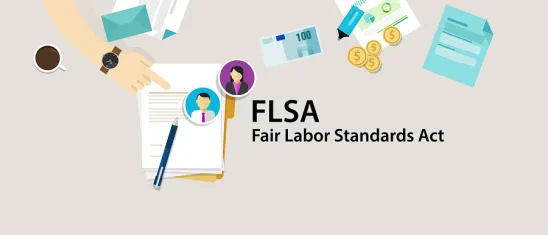Yesterday, the U.S. Department of Labor (DOL) released the final version of its anticipated overtime exemption rule, setting a new annual salary threshold for “white collar” exemptions under the Fair Labor Standards Act (FLSA) at just over $35,000 per year. In the DOL’s press release accompanying the final rule, the agency anticipated its action will “make 1.3 million American workers newly eligible for overtime pay.” The new rule will take effect on January 1, 2020.[1]
Consistent with a proposed rule the DOL issued earlier this year, the final rule raises the salary threshold for FLSA overtime exemption for bona fide executive, administrative, and professional (EAP) workers to $35,568 per year or $684 per week, up from the current threshold of $23,660 per year or $455 per week.
The final rule also raises the highly compensated employees (HCEs) exemption threshold from $100,000 to $107,432. The HCEs exemption applies to highly paid workers who perform at least some managerial functions, but do not otherwise qualify as exempt EAP workers based on their assigned job tasks.
The final rule also sets “special salary levels” – i.e., lower salary thresholds than set forth above – for employees in certain U.S. territories, including Puerto Rico and American Samoa, “because minimum wages rates [in those locations] have remained lower than the federal minimum wage.”
Finally, in light of “evolving pay practices” utilized by employers, the final rule “permits employers to use nondiscretionary bonuses and incentive payments to satisfy up to 10 percent of the standard salary level” so long as such nondiscretionary bonuses and incentive pay are made “on an annual or more frequent basis.” The DOL also will allow employers to make one “catch-up” payment within a single pay cycle at the end of a 52-week period of up to 10 percent of the total standard salary threshold ($3,556.80 once the final rule goes into effect), which can be counted towards the prior year’s salary threshold.
The final rule eliminates a mechanism for automatically increasing the overtime exemption threshold intermittently, which had been a feature of earlier versions of the proposed rule. In issuing the final rule, the DOL explained that its decision to remove the automatic incremental increases was to avoid “depriv[ing] the department of flexibility to adapt to unanticipated circumstances.”
The salary threshold under the DOL’s final rule is significantly lower than under the proposed rule promulgated by the Obama administration DOL in 2016, which would have set the overtime exemption salary threshold for EAPs at $47,476 per year. That proposed rule was enjoined prior to becoming effective.
[1] It is possible litigation could be brought by states or impacted businesses to attempt to enjoin the final rule before its effective date, as occurred with the Obama Administration’s 2016 proposed rule that was enjoined by a federal district court in Texas less than a month before it was due to go into effect. Schiff Hardin will continue to monitor and report any such future developments.




 />i
/>i
